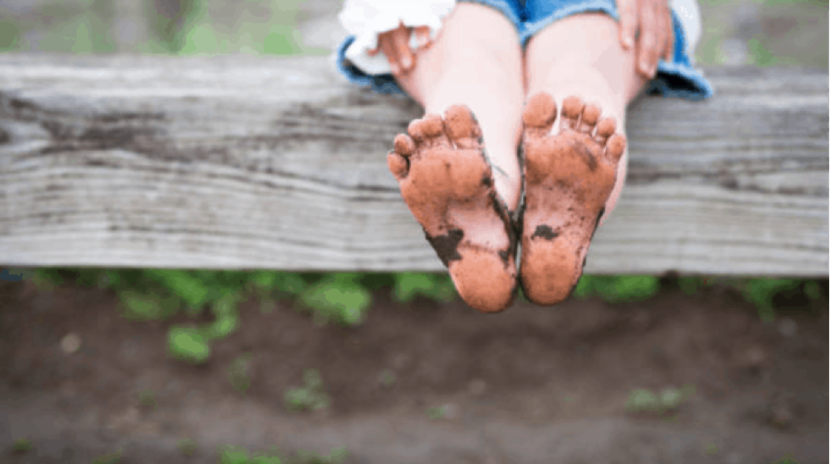Over the years we’ve had robust discussion about shoes on vs shoes off at JSACP. Maybe you’re one of those parents or guardians that get told “They’re just putting their shoes on, then they’ll be ready to go”.
For many of our children it’s almost second nature to kick their shoes off and put them in their bag as soon as they arrive at After School Care. We don’t blame them, we love taking our shoes off at the end of the day. Our children also seem to have this innate knowledge that jumping, running and all those physical components of play are made easier by being barefoot. The research backs up that intuitive wisdom. Being barefoot is an integral part of development and has long term health benefits. Read on to find out more.
Walking Barefoot Develops Healthy Gait and Body Mechanics
Children become more adept at using their feet when they are allowed to roam and play barefoot. Being barefoot promote better biomechanics and allows us to develop a healthy gait where weight is more evenly distributed. When we are barefoot, the small muscles in our feet alter the shape of our foot and body position to the surface we are walking on. When walking barefoot we can grip the ground more easily using the muscles of our feet and toes. Not only does this strengthen these muscles, but it also results in more effective balance.
Barefoot Play Develops a Sense of Body Awareness (Proprioception)
Feet and toes are jam packed with nerve endings and when we’re barefoot, we use the feedback from the ground beneath us in order to develop a sense of where our body is and how we can safely negotiate our environment. When wearing shoes, we get less information about where we are walking and therefore need to look down more frequently to get this information.
Playing Barefoot Fosters a Connection with the Environment and Accompanying Sensory Experiences.
Research again tells us the importance of spending time outdoors and that a connection to our natural world allows us to de-stress and relax. Walking barefoot promotes an affinity with nature and allows us to fully immerse ourselves in all the accompanying sensory experiences. The feeling of freshly cut grass, the splash of a muddy puddle & digging your toes into the sand. All of these provide us with important feedback with our environment and allow us to explore and connect with nature using all our senses.
Additional Safety Benefits
Being barefoot teaches children to assess situations and adapt to them. It creates a heightened awareness of surroundings and an ability to react to different situations as they arise. For example, walking on a slippery or rocky surface, we’re likely to go slower and take in feedback about the path we should take through the feedback from our feet. Using this approach, we’re more likely to avoid injury. These are important skills in assessing and managing risks and are certainly skills applicable to many aspects of children’s lives.
Of course, accompanying all these benefits is a robust risk assessment & management process to ensure we keep our children safe. We surveyed parents several years ago and there was overwhelming support for this decision. We pride ourselves on being an organization that makes decisions by consulting with our stakeholders, researching the evidence-base and taking into account the best interests of our children. This decision was no different! If you have any questions or feedback about barefoot play, feel free to drop us a line. But for now, feel free to leave your shoes at the door.

